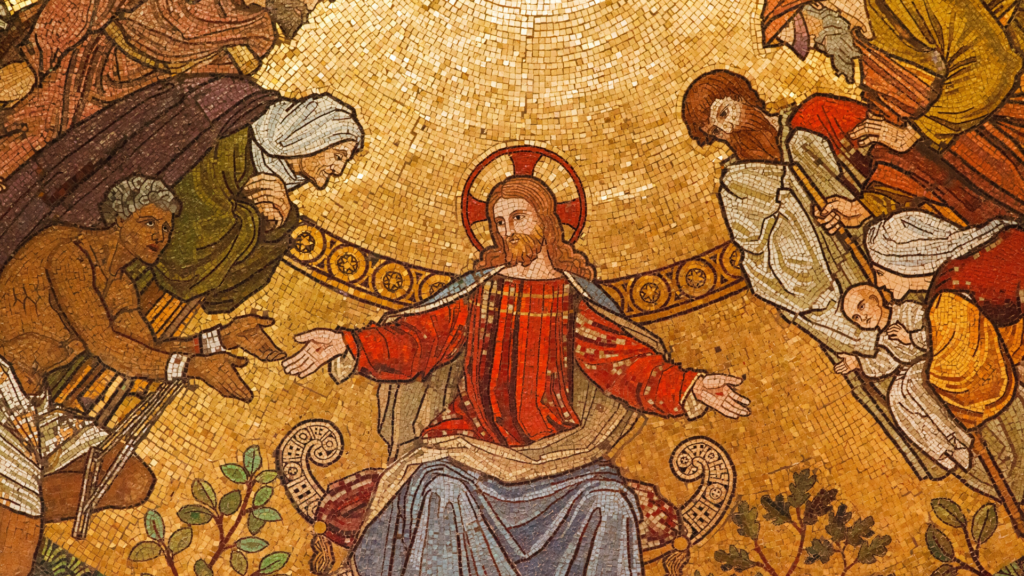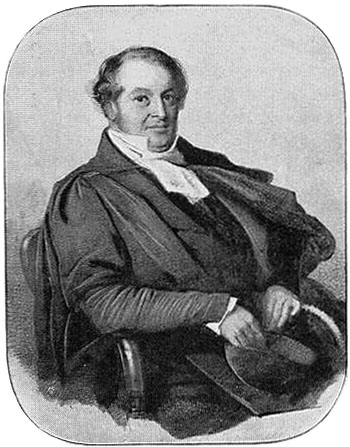
Uniformity, biblical criticism and supernatural activity in the 19th century
By Nathan Bossoh

In June 1887 the Canadian writer Grant Allen aptly summed up the evolution of science over the preceding fifty years in an article for the Fortnightly Review entitled “The Progress of Science from 1836 to 1886”. After providing an elaborate yet succinct overview of the immense expansion of science, Allen concluded that
“In marvellous contrast to the fragmentary and disjunctive science of fifty years ago, modern science at the present day offers us the spectacle of a simple, unified, and comprehensible cosmos, consisting everywhere of the same prime elements, drawn together everywhere by the same great forces, animated everywhere by the same constant and indestructible energies, evolving everywhere along the same lines in accordance with the self-same underlying principles”
Allen, G., 1887. THE PROGRESS OF SCIENCE FROM 1836 TO 1886. Fortnightly review, May 1865-June 1934, 41 (246), p.868-884.
Allen’s comments were a direct allusion to the principle of uniformity in nature; this was the idea that science had shown—through the inductive method—that the universe acted according to certain fixed laws that could not be altered at any time, past, present nor future. This posed a problem for a particular religious consideration: if science confirmed uniformity, what room was there for God’s intervention in nature? During the 1860s and 70s this question was brought to the forefront of British society, but as I will demonstrate, it was not a simple case of conflict between science and religion. Theists and naturalists alike both utilized uniformity in order to explain how miracles could or could not occur, and very often the supposed boundaries between science and religion were highly blurred.
Severe criticism of the possibility of miracles dates back to at least the eighteenth century and the works of the English churchman Conyers Middleton (1749) and the Scottish philosopher David Hume (1748). Middleton questioned the miracles of the early church Fathers, that Protestants had traditionally accepted as legitimate, while Hume pushed this critique even further, suggesting that no miracles could ever have occurred since they would have been ‘a violation of the laws of nature’ (1). It was also the eighteenth century that gave rise to biblical criticism, which was largely rooted in the scholarship of German rational-liberal theologians. These liberal theologians sought to revise how the Bible was understood. Conservative Protestants had, since the reformation, affirmed Biblical miracles and prophecies, and historical accounts in scripture were assumed to be literally accurate, such as the account of Noah’s Ark (Genesis 6-9). But this was not acceptable to the new liberal thinkers. The German theologian David Strauss put it most succinctly when he wrote in his book Life of Jesus (1835) that we could reject all miracles, prophecies and narratives of angels and demons “as simply impossible and irreconcilable with the known and universal laws which govern the course of events.” (2)
Although acutely aware of events such as the French Revolution (1789 – 1799) and the introduction of German higher criticism, English clergymen in the nineteenth century continued to provide arguments for the veracity of miracles in the Bible. Nevertheless, they understood the challenge that Hume and liberal theology alike had raised. By the mid-nineteenth century the implicit problem of miracles could no longer be contained, and their veracity was challenged head-on, from both naturalistic and theistic camps.
By 1865 the historian William Lecky was able to identify at least three different approaches to the problem of miracles from within the theistic camp (3). Firstly there was the Christian evidentialist school, which consisted of intellectuals who readily acknowledged the traditional Biblical account of miracles. Next were the liberal-rationalists, intellectuals who, although holding to the Christian faith, were nevertheless highly sceptical towards supernatural claims. Thirdly, Lecky identified a group that consisted of members who sat halfway between the evidentialists and rationalists, which I call the ‘evidential-rationalists’. This group accepted the validity of miracles, but applied a novel explanation in order to support their stance. This leaves a fourth group: the scientific naturalists/agnostics, who would agree with the rationalist school that miracles could not occur, but disagreed with them by arguing that evidence for the existence of God was tenuous at best.

Wikimedia Commons (Hartmann/Public Domain)
The ordained Anglican priest and Oxford professor of geometry, Baden Powell, declared his support for the rationalist school in the hugely controversial Essays and Reviews (1860). In a chapter on miracles Powell asserted that, due to both the uniformity of nature and the German critical method, Biblical miracles could not have occurred (4). Historians regularly write about uniformity in relation to science; Biblical criticism, however, is much less studied. Yet this obscures an equally important part of Victorian discourse not just on miracles, but the wider relations of science and religion. In this specific case, proponents of Biblical criticism held that the Bible could no longer be read as a book immune from the judgements of standard history. Rather, it should be read as any ordinary historical book, and subject to the regular rules of nature. As a professor of geometry, Powell was very familiar with the concept of uniformity and upon these grounds he rejected miracles. The professor of physics John Tyndall advanced this argument ruthlessly in the 1870s in the form of the “prayer-gauge-debate”. In a series of publications throughout the 1870s Tyndall (and his supporters) argued that from heliocentrism, to the geological expansion of the age of the earth, to evolutionary theory, that whenever Biblical claims about the physical world were subjected to scientific investigation, the Bible was shown to be profoundly mistaken. In the eyes of Tyndall, the physical power of prayer, which many conservative theologians, both Protestant and Catholic accepted, was the next theological claim to be subjected to scientific investigation, and he did not envisage a positive outcome for those who affirmed its capabilities (5).
So far, we have only explored the arguments against miracles, so let us now explore the reverse. Indeed, some Christian thinkers were not at all persuaded by the rationalistic or naturalistic arguments. The 8th Duke of Argyll, the theologian John Tulloch and the philosopher James McCosh, for example argued that, in contrast to the forceful claims of Tyndall and Powell, uniformity and miracles did go hand in hand. To do so, they changed the terms of debate. Argyll, Tulloch, and McCosh all claimed that instead of miracles being contrary to the laws of nature as Hume had declared, they were simply the workings of higher laws of nature unknown to us. This proposition was the Augustinian proposition re-vivified at a time when it once again proved useful. For Augustine, miracles were not contrary to nature, but rather contrary to our own knowledge of nature (6). Similarly, Tulloch could state that instead of talking about violations of laws, we need only talk about higher and lower laws. In this light Biblical miracles did not threaten uniformity because they were simply “expressions of the Divine order in…new shapes.” (7)
In fact, when we dig deeper, we can locate many points of agreement between each of these camps. For example, both Powell and Argyll agreed that certain events that seemed miraculous now may be explained by science in the future. The difference between them, was that whilst Powell believed that everything seemingly miraculous could eventually be explained, Argyll argued that certain things could never be explained, and it was these unknowns which were truly miracles in the Augustinian sense. Frederick Temple, a fellow contributor to Essays and Reviews, and later Archbishop of Canterbury continued to affirm Biblical miracles by simply stating that the nature of a miracle could be found in the timing or intent of the event, as opposed to its supposed violation of natural regularity (8).
From the introduction of Biblical criticism in the eighteenth century, to the subsequent and remarkable advances in the sciences during the nineteenth century, views on Biblical miracles were fundamentally altered, but one should not assume that theists inevitably lost ground to the naturalists. Instead, one should see the debates as taking place on a spectrum in which theistic and naturalistic perspectives mixed in many ways. As the historian of science Matthew Stanley has argued, “[t]he uniformity of nature did indeed become an increasingly critical assumption of science over the course of the century, but its role as an anti-religious category was far from clear.” (9) I would add that Biblical criticism also became an increasingly crucial assumption in theology during this period; future historical research should seek to address this. The role of Biblical criticism throughout the mid-to-late nineteenth century was not just limited to the question of miracles, but extended directly to the very framework of scientific and religious discourse as a whole.

Nathan Bossoh is a PhD student in history and philosophy of science at UCL/Royal Institution. His research focuses on the scientific and religious output of the 8th Duke of Argyll, and more generally the influence of the Aristocrat in both of these fields during the Victorian era. For more see his Research Profile.
Follow Nathan on Twitter: @nathanbossoh
References:
- See Elgin, G, Vernon., 1960. The Eighteenth Century Discussion Concerning the Continuation of Miracles After the Apostolic Age with Special Reference to the Writings of Conyers Middleton. Ph. D. Edinburgh University ; also see Hume, D., 1748. An Enquiry Concerning Human Understanding. London: A. Millar. p.180
- Strauss, Friedrich, D., 1902 The Life of Jesus. Translation of fourth German edition. London: Swan Sonnenschein & Co. Lim. p.71
- Lecky, W., 1865. History of the Rise and Influence of the Spirit of Rationalism in Europe. Vol1. London: Longmans, Greens and Co. p.151-205
- Powell, Baden., 1860. On the Study of the Evidences of Christianity, in: 1860. Essays and Reviews. London: John W. Parker and Son, West Strand. p.107, 142
- In 1876 John O. Means complied (in chronological order) all of the articles replies – in support or opposition – to the proposed prayer-gauge debate during the early 1870s; this was then published under the title The Prayer-Gauge Debate. See Tyndall, John., 1872. On Prayer in: J, Means, ed. 1876. The Prayer-Gauge Debate. Boston: Congregational Publishing Society. p.111
- St Augustine. Contra Faustum, XXVI.3. Available at <http://www.newadvent.org/fathers/140626.htm>
- Tulloch, J. 1863. Beginning Life. London: Alexander Strahan & Co. p.35
- T, Frederick., 1884. The Relations between Religion and Science. London: Macmillan.VII.
- Stanley, M., 2011. The Uniformity of Natural Laws in Victorian Britain: Naturalism, Theism, and Scientific Practice. Zygon Journal of Religion & Science. [e-journal] 46(3). Available through: Wiley Online Library website https://onlinelibrary-wiley-com.libproxy.ucl.ac.uk/doi/full/10.1111/j.1467-9744.2011.01198.x
